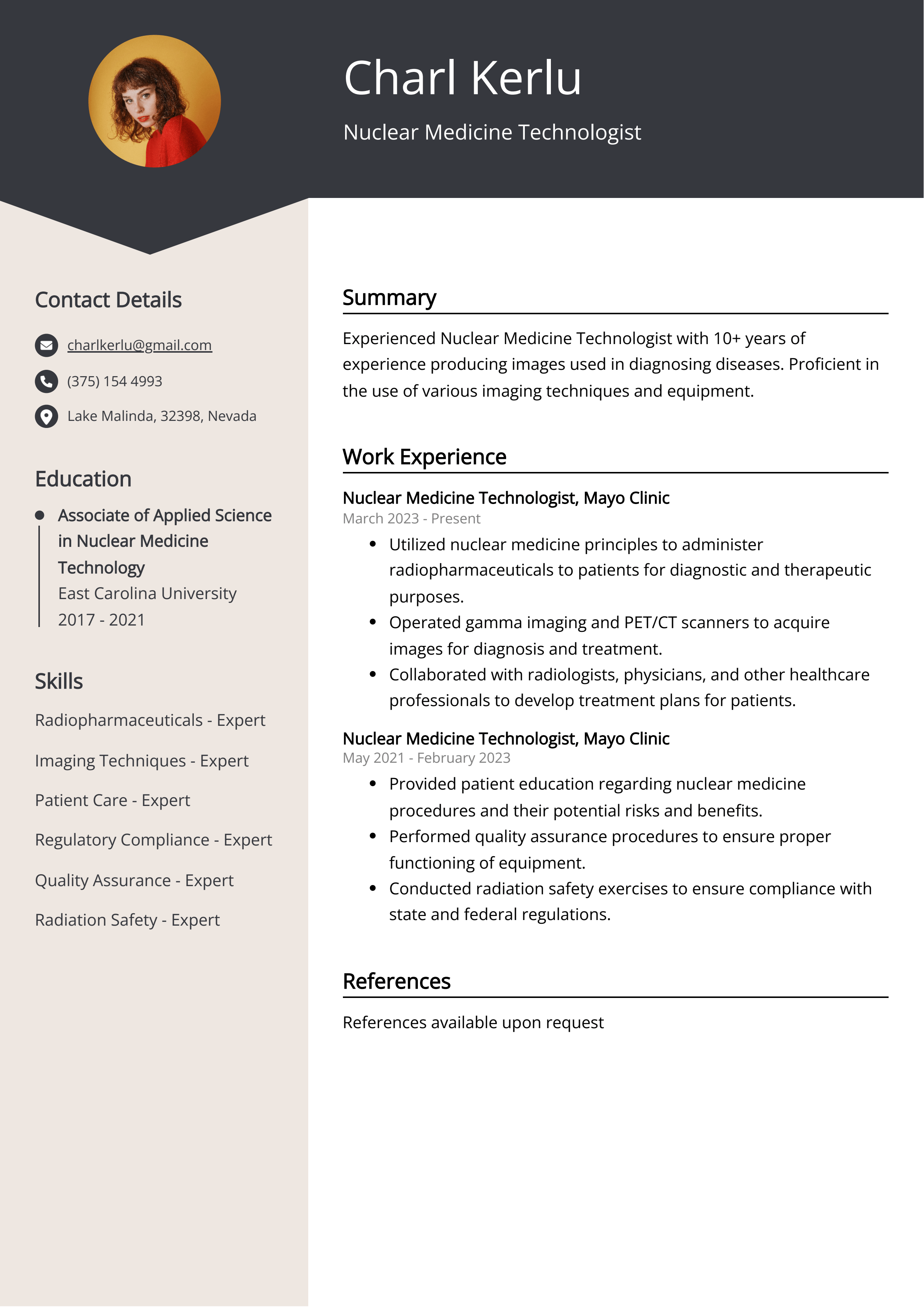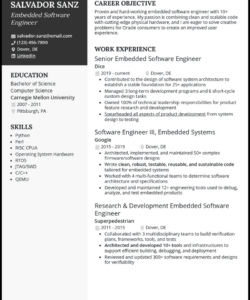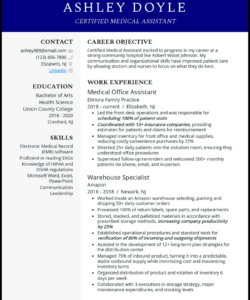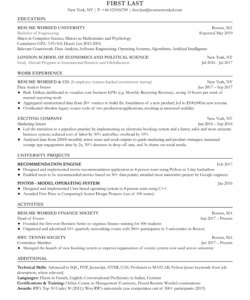Landing your dream job as a nuclear medicine technologist begins long before your interview; it starts with an impeccable resume. In a competitive healthcare landscape, your resume serves as your crucial first impression, a detailed snapshot of your skills, experience, and dedication. It’s not just a document listing your qualifications; it’s a strategic marketing tool designed to open doors and secure those coveted interview slots.
Crafting such a powerful document can feel daunting, especially when you’re balancing a demanding professional life. This is precisely where a well-designed nuclear medicine technologist resume template becomes invaluable. It provides a structured framework, ensuring you don’t miss any critical sections while allowing you to focus on populating it with your unique professional story and achievements. Let’s explore how to make your resume truly shine.
Crafting Your Stellar Nuclear Medicine Technologist Resume: Essential Sections
A standout resume for a nuclear medicine technologist isn’t just about listing every task you’ve ever performed. It’s about strategically presenting your most relevant skills and experiences in a clear, concise, and compelling manner. Think of it as telling your professional story, tailored to resonate with the specific needs of the healthcare facility you’re targeting. Every section should contribute to a cohesive narrative that positions you as the ideal candidate.

Contact Information and Professional Summary
Your resume should start with your complete contact details: name, phone number, email, and a link to your professional LinkedIn profile if you have one. Immediately following this, a powerful professional summary or objective statement is key. This is a brief, 2-4 sentence paragraph that highlights your top qualifications, years of experience, and career aspirations, directly aligning them with the job you’re applying for. For instance, you might emphasize your expertise in specific imaging modalities or patient care.
Highlighting Your Education and Certifications
Given the specialized nature of nuclear medicine, your educational background and professional certifications are paramount. Clearly list your degrees, the institutions you attended, and your graduation dates. More importantly, enumerate your professional certifications, which demonstrate your competence and adherence to industry standards. These often include:
- ARRT (N) – Nuclear Medicine Technology
- NMTCB – Nuclear Medicine Technology Certification Board
- BLS/ACLS Certification
- Any state-specific licenses or certifications
Ensure these are prominently displayed and current, as they are often a non-negotiable requirement for employers in this field.
Showcasing Your Clinical Experience
This is arguably the most crucial section. For each position, include your job title, the name of the facility, its location, and your dates of employment. Underneath each entry, use strong action verbs to describe your responsibilities and, more importantly, your achievements. Don’t just list duties; quantify your accomplishments where possible. Did you contribute to reducing scan times? Improve patient satisfaction scores? Detail your experience with various radiopharmaceuticals, imaging equipment (e.g., SPECT, PET/CT), and patient populations. Highlight your adherence to radiation safety protocols, quality control procedures, and your ability to work effectively within a multidisciplinary team. Show your impact.
Key Skills to Emphasize
Beyond your clinical experience, a dedicated skills section allows you to quickly convey your technical proficiencies and soft skills. Technical skills might include specific software (PACS, EMR), equipment operation, and knowledge of various diagnostic procedures. Soft skills are equally important, encompassing patient communication, critical thinking, problem-solving, and teamwork. Tailor these skills to match the job description, ensuring that the keywords align with what employers are actively seeking.
Optimizing Your Template for Impact and ATS Compatibility
Even with excellent content, your nuclear medicine technologist resume template needs to be formatted for maximum impact and, crucially, for Applicant Tracking System (ATS) compatibility. Many large healthcare organizations use ATS to filter resumes, meaning if your resume isn’t optimized, it might never reach human eyes. Think of the template as a canvas; how you paint on it matters just as much as the quality of your paints.
Firstly, prioritize clarity and readability. Use a clean, professional font (like Arial, Calibri, or Times New Roman) between 10-12 points for the body text, with slightly larger headings. Employ consistent formatting for dates, job titles, and company names. Ample white space makes the document less daunting and easier to scan, which is vital for busy recruiters. Keep it concise, ideally aiming for a two-page maximum for experienced professionals; one page for entry-level roles.
Secondly, keyword optimization is non-negotiable for ATS success. Carefully review the job description for the specific role you’re applying for. Identify recurring keywords, phrases, and technical terms related to nuclear medicine technology, patient care, and equipment. Seamlessly integrate these keywords throughout your resume, especially in your summary, experience, and skills sections. This increases the likelihood of your resume being flagged as a match by the ATS, moving it forward in the screening process.
Finally, remember that a template is a starting point, not a finished product. Always customize your resume for each specific job application. While the core information remains consistent, fine-tune your summary, rephrase bullet points, and adjust your skills section to directly address the requirements of the role. Before hitting submit, proofread meticulously. Typos and grammatical errors can undermine your professionalism and attention to detail. Consider asking a trusted colleague or friend to review it as well, offering a fresh pair of eyes.
By thoughtfully structuring your information and paying attention to presentation, you transform a simple template into a powerful advocacy document. Your resume isn’t just a record of your past; it’s a projection of your potential and a direct invitation for an interview.
Taking the time to refine each section, from your compelling summary to your detailed experience, significantly boosts your chances of catching a recruiter’s eye. A well-crafted resume effectively communicates your value and expertise, setting you apart in a competitive field and moving you closer to securing your desired position in nuclear medicine.


